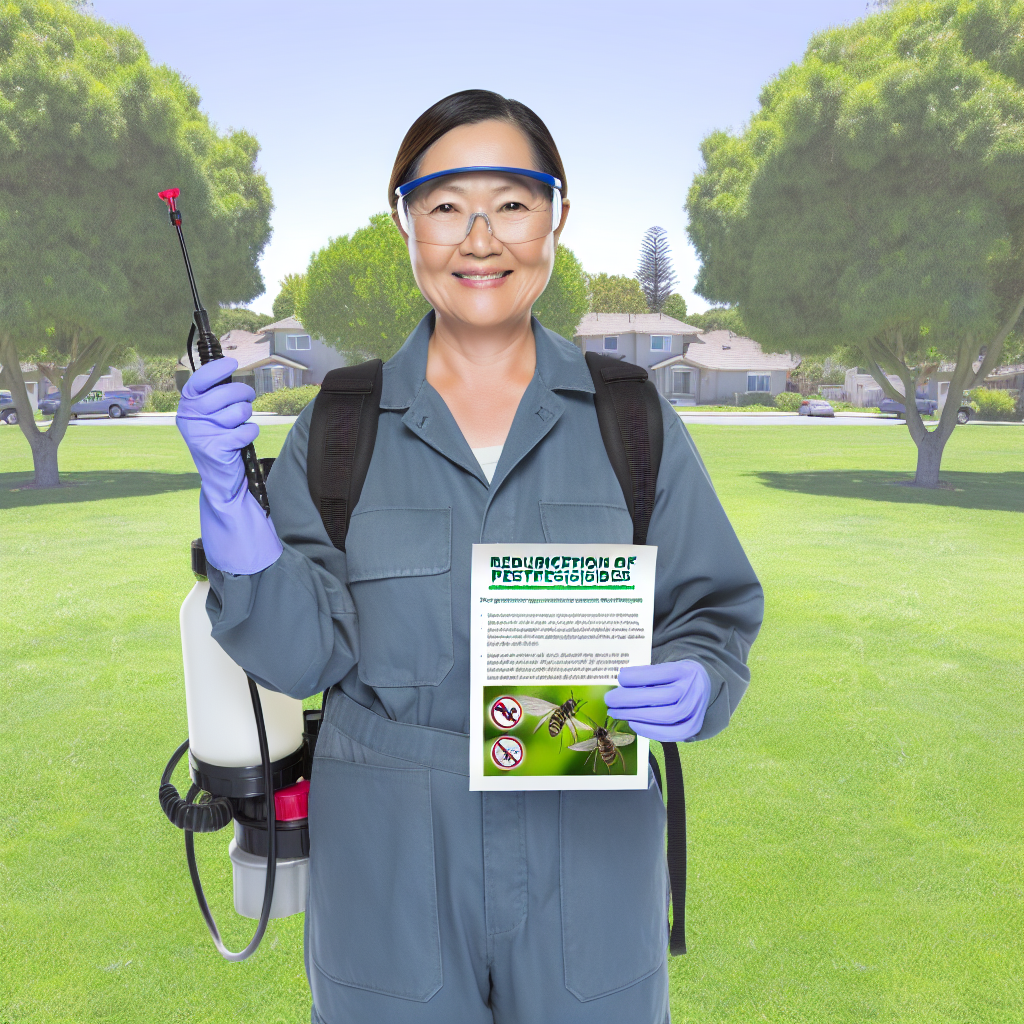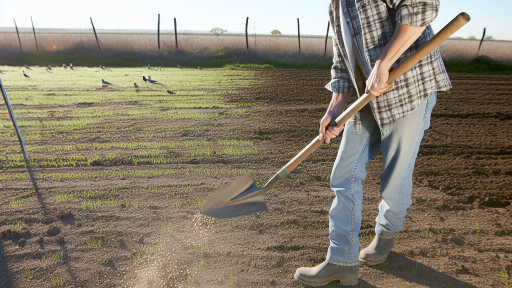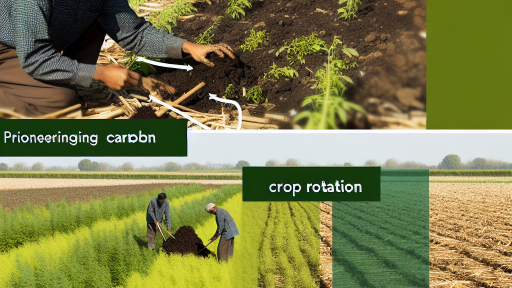Introduction to Integrated Pest Management
Defining Integrated Pest Management
Integrated Pest Management, or IPM, is an effective approach to pest control.
It combines different management strategies to reduce pests sustainably.
Farmers utilize knowledge from various fields to implement IPM successfully.
Significance of IPM in Agriculture
IPM plays a crucial role in modern agriculture.
It reduces dependency on chemical pesticides, leading to safer food production.
Additionally, IPM promotes environmental sustainability.
Key Components of IPM
IPM includes several essential components for effective pest management.
- Monitoring pest populations and assessing damage thresholds.
- Utilizing biological controls like beneficial insects.
- Implementing cultural practices such as crop rotation.
- Employing physical barriers to deter pests.
- Applying chemical controls as a last resort.
This multifaceted approach enhances crop health and productivity.
Benefits of Integrated Pest Management
Implementing IPM provides numerous advantages for farmers and the environment.
Firstly, it reduces the risk of developing pesticide-resistant pest populations.
Secondly, it minimizes the impact on non-target species, such as pollinators.
Moreover, IPM enhances biodiversity on farms.
Lastly, it can lead to cost savings in the long run.
Challenges Faced in Implementing IPM
Despite its benefits, adopting IPM can present challenges.
Farmers may face a lack of knowledge regarding IPM techniques.
Transform Your Agribusiness
Unlock your farm's potential with expert advice tailored to your needs. Get actionable steps that drive real results.
Get StartedAdditionally, there can be resistance to change from traditional farming practices.
Limited access to resources for monitoring and control can also hinder implementation.
Future of Integrated Pest Management
The future of IPM looks promising with advancing technology.
Innovations such as precision agriculture enhance pest management strategies.
Furthermore, education and outreach will empower more farmers to adopt IPM.
Ultimately, it will contribute to a more sustainable agricultural system.
Understanding the Ecological Impact of Pesticide Use
Impact on Biodiversity
Pesticide use significantly affects local biodiversity.
It kills not only harmful pests, but also beneficial insects.
This loss disrupts natural ecosystems and food webs.
For instance, pollinators like bees are highly sensitive to pesticides.
As their populations decline, many plants struggle to reproduce.
Soil Health Concerns
Pesticides can degrade soil health over time.
They kill beneficial microorganisms essential for nutrient cycling.
Without these microorganisms, soil becomes less fertile.
As a result, agricultural yields may decrease in the long run.
This can lead to increased chemical input to compensate.
Water Quality Issues
Runoff from pesticide application contaminates local water sources.
This runoff can harm aquatic ecosystems and drinking water supplies.
Furthermore, it affects fish and other aquatic organisms.
Consequently, communities face health risks from contaminated water.
Human Health Risks
Exposure to pesticides poses health risks to farmworkers and nearby residents.
These risks include respiratory problems and skin irritations.
Some pesticides are linked to long-term health issues like cancer.
Consequently, reducing pesticide reliance is crucial for public safety.
Showcase Your Farming Business
Publish your professional farming services profile on our blog for a one-time fee of $200 and reach a dedicated audience of farmers and agribusiness owners.
Publish Your ProfileThe Need for Reduction
The environmental impacts of pesticides highlight the need for reduction.
Integrated Pest Management (IPM) offers a viable alternative.
IPM combines cultural, biological, and chemical practices.
This approach minimizes the use of harmful pesticides.
Moreover, it enhances crop diversity and resilience.
By implementing IPM, we can protect ecosystems and improve crop sustainability.
Core Principles of Integrated Pest Management
Prevention Strategies
Preventing pest problems is the first step in Integrated Pest Management (IPM).
This involves practices that reduce pests’ chances of becoming a problem.
For example, crop rotation disrupts pest life cycles.
Maintaining healthy soil promotes plant resilience against pests.
Utilizing pest-resistant crop varieties also serves as an effective barrier.
Additionally, proper sanitation reduces pest habitats.
Monitoring Practices
Monitoring is crucial to IPM for effective pest control.
This includes regular scouting of crops to check for pest presence.
Farmers can utilize traps to track pest populations accurately.
Furthermore, identifying pest species helps determine appropriate action.
Using thresholds indicates when action is needed.
Ultimately, regular monitoring gives farmers insight into pest dynamics.
Control Strategies
Control strategies in IPM encompass various methods.
Biological control introduces natural enemies to manage pest populations.
Cultural practices also play a role, such as adjusting planting times.
Mechanical control involves physical barriers and traps to eliminate pests.
Chemical controls are applied as a last resort and targeted carefully.
Overall, combining these strategies enhances pest management effectiveness.
Explore Further: Sustainable Pest Control with IPM Practices
The Role of Cultural Practices in Reducing Pest Populations Naturally
Understanding Cultural Practices
Cultural practices refer to various agricultural techniques.
They significantly influence pest populations.
Farmers actively use these practices to enhance crop health.
Moreover, these techniques can deter pests naturally.
Crop Rotation Benefits
Crop rotation involves varying crops planted in a field annually.
This method disrupts pest life cycles effectively.
By changing plant types, pests lose their established food sources.
As a result, pest populations decline over time.
Soil Management Techniques
Effective soil management enhances plant health.
Healthy plants can withstand pest attacks better.
Practices like cover cropping improve soil quality.
They also benefit beneficial insects that control pests naturally.
Resistant Plant Varieties
Using pest-resistant plant varieties reduces pest issues.
These plants are bred to withstand specific pests.
Farmers can select varieties suited to their local conditions.
Showcase Your Farming Business
Publish your professional farming services profile on our blog for a one-time fee of $200 and reach a dedicated audience of farmers and agribusiness owners.
Publish Your ProfileThis selection can lead to fewer pesticide applications.
Timing and Planting Strategies
Planting at the right time is crucial for pest control.
Early planting can give crops a growth advantage.
Furthermore, staggered planting can confuse pests.
This approach makes it harder for them to establish populations.
Promoting Beneficial Insects
Encouraging beneficial insects aids in controlling pests.
Natural predators can reduce pest numbers sustainably.
Farmers can plant flowers that attract these beneficial insects.
This strategy enhances ecological balance on the farm.
Regular Monitoring and Assessment
Regularly monitoring crops helps in identifying pest problems early.
Detecting issues promptly allows for quick intervention.
Farmers can observe pest populations and their predators closely.
This observation leads to informed decision-making.
Implementing Integrated Pest Management
Integrating multiple cultural practices maximizes their effectiveness.
Combining methods strengthens pest management efforts significantly.
Farmers should assess their specific situations.
Tailoring cultural practices can provide the best results.
Uncover the Details: Conservation Tillage Explained For Sustainable Farming
Biological Control Methods
Leveraging Natural Predators
Natural predators are effective agents in managing pest populations.
They can reduce reliance on chemical pesticides.
Common examples include ladybugs and lacewings.
Ladybugs feed on aphids, a common garden pest.
Lacewings consume various pest larvae and eggs.
Introducing these predators can establish a natural balance.
Farmers can purchase and release them in affected areas.
With time, these predators help curtail pest outbreaks.
Utilizing Parasitoids
Parasitoids are another essential component of biological control.
These organisms lay eggs inside or on host pests.
The larvae eventually consume the host, leading to its death.
This method targets specific pests while preserving beneficial insects.
A well-known parasitoid is the parasitic wasp.
These wasps can control caterpillar populations effectively.
Farmers can cultivate their habitats to attract these wasps.
Over time, this can significantly reduce pest numbers.
Encouraging Biodiversity
Promoting biodiversity enhances the effectiveness of biological control.
A diverse ecosystem allows for various predator and prey interactions.
This complexity creates a more resilient agricultural environment.
Planting a variety of crops can support different beneficial insects.
Cover crops and companion planting are practical strategies.
They create habitats and food sources for these natural predators.
Showcase Your Farming Business
Publish your professional farming services profile on our blog for a one-time fee of $200 and reach a dedicated audience of farmers and agribusiness owners.
Publish Your ProfileFarmers should consider these practices for sustainable pest management.
Implementing Integrated Pest Management
Biological control methods fit well within integrated pest management strategies.
These strategies combine multiple approaches for effective pest control.
They include cultural, mechanical, and biological methods.
Farmers can monitor pest populations and act accordingly.
Additionally, educating the community about these methods is vital.
Workshops and informational resources can raise awareness.
This knowledge promotes the adoption of sustainable practices.
Ultimately, integrated pest management leads to healthier crops.
Uncover the Details: Efficient Water Management Practices in Agriculture
Chemical Control in Integrated Pest Management
Selecting Less Harmful Pesticides
Choosing the right pesticides involves careful consideration of their environmental impact.
It’s essential to select products with low toxicity to non-target organisms.
Use pesticides that break down quickly in the environment.
Additionally, consider products that have specific targeting capabilities.
For instance, use selective insecticides that target specific pest species.
Research shows that reduced-risk pesticides can be effective with appropriate usage.
Always review the pesticide label for safety information and usage guidelines.
Appropriate Use of Pesticides
Using pesticides at the right time enhances their effectiveness.
Monitor pest populations regularly to make informed application decisions.
Applying pesticides during the pest’s most vulnerable life stage greatly increases control success.
Weather conditions also play a role in successful pesticide application.
Avoid applying pesticides before rain forecasts to prevent runoff.
Moreover, practice proper application techniques to minimize drift.
Utilizing integrated pest management methods reduces reliance on chemical control.
Combine chemical control with cultural and biological practices for better results.
Evaluation of Pesticide Impact
Continuously evaluate the effects of pesticide use on the ecosystem.
Document changes in pest populations and non-target species.
Gather data on the efficacy and safety of pesticides applied.
Adjust practices based on monitoring results and new research.
The goal is to maintain effective pest control while protecting the environment.
Learn More: Best Practices For Soil Erosion Prevention

Case Studies Showcasing Successful Implementation of IPM
Fruit Farming in California
California fruit farmers have embraced Integrated Pest Management (IPM) techniques.
Farmers such as Maria Torres have successfully reduced pesticide use.
They rely on monitoring and beneficial insects for pest control.
This method has increased both yield and fruit quality.
Furthermore, it promotes environmental sustainability in agriculture.
Vegetable Production in the Midwest
In the Midwest, vegetable growers have adopted IPM practices effectively.
For example, James Mitchell employs crop rotation to manage pests.
This strategy disrupts pest lifecycles and reduces their populations.
Additionally, he uses biodegradable pest deterrents, enhancing soil health.
Showcase Your Farming Business
Publish your professional farming services profile on our blog for a one-time fee of $200 and reach a dedicated audience of farmers and agribusiness owners.
Publish Your ProfileAs a result, his farm has seen a significant reduction in chemical applications.
Cereal Crops in Australia
Australian cereal farmers are turning to IPM to mitigate pest threats.
Claire Roberts implements integrated practices that include soil health management.
She combines crop diversity with natural pest predators.
This holistic approach lessens reliance on synthetic pesticides.
Moreover, it contributes to healthier ecosystems in her farming area.
Ornamental Plants in Florida
Ornamental plant growers in Florida are also reaping benefits from IPM.
William Anderson utilizes pheromone traps to monitor pests.
This allows for precise targeting of pest populations.
Moreover, he incorporates organic treatments to control infestations.
Overall, his efforts have fostered a safer growing environment.
Success Stories Nationwide
Across the nation, diverse farming systems illustrate IPM’s effectiveness.
Farmers are sharing their experiences through local cooperatives.
They collaborate to refine pest management strategies while reducing chemical use.
These shared practices bolster community resilience and market competitiveness.
As a result, many are excited about future innovations in pest management.
Challenges and Barriers in Adopting Integrated Pest Management Practices
Understanding Knowledge Gaps
Farmers often lack access to current Integrated Pest Management (IPM) training.
Many producers are unaware of effective non-chemical pest control methods.
This gap in knowledge hampers the adoption of IPM practices.
Furthermore, the complexity of IPM can be intimidating for new farmers.
Financial Constraints
Adopting IPM may require upfront investment in new technologies.
Many farmers face financial burdens that limit their ability to invest.
Moreover, the transition period can result in short-term yield losses.
These financial challenges discourage farmers from adopting IPM strategies.
Access to Resources
Farmers often struggle to find reliable sources of IPM resources.
Limited access to extension services can hinder support and information flow.
Additionally, rural areas may lack local suppliers of IPM materials.
This lack of access further complicates the implementation of IPM.
Cultural and Behavioral Resistance
Traditional farming practices are deeply rooted in farming communities.
Many farmers are resistant to changing established habits and methods.
This cultural inertia can obstruct the adoption of innovative practices.
Furthermore, there is often skepticism surrounding the benefits of IPM.
Policy and Regulatory Issues
Inconsistent state policies can create confusion regarding IPM practices.
Some regulations may inadvertently favor chemical pesticides over IPM.
This lack of supportive legislation complicates consistent IPM adoption.
Moreover, funding for IPM initiatives is often limited or inconsistent.
Future Trends in Pesticide Reduction and Sustainable Pest Management Practices
Advancements in Technology
Technological developments will play a crucial role in reducing pesticide use.
Precision agriculture makes pest control more efficient and targeted.
Farmers now use drones to monitor crop health and pest populations.
Moreover, data analytics helps in predicting pest outbreaks effectively.
Showcase Your Farming Business
Publish your professional farming services profile on our blog for a one-time fee of $200 and reach a dedicated audience of farmers and agribusiness owners.
Publish Your ProfileIntegration of Biological Control
Biological pest control is gaining popularity among farmers.
This method uses natural predators to manage pest populations.
For example, ladybugs help control aphid infestations.
Farmers will increasingly use integrated pest management strategies.
Eco-Friendly Alternatives
Research is uncovering eco-friendly alternatives to traditional pesticides.
Natural repellents derived from plants are becoming more common.
Moreover, microbial pesticides offer sustainable solutions for pest control.
Policy and Regulation Changes
Government policies are shifting towards sustainable farming practices.
Regulations will encourage reduced chemical reliance in agriculture.
Incentives for farmers adopting eco-friendly practices will emerge.
Education and Awareness
Raising awareness about sustainable practices is essential.
Farmers need access to education on integrated pest management.
Workshops and training programs will become increasingly available.
As a result, a more informed farming community will emerge.
Additional Resources
Integrated Pest Management (IPM): Sustainable Pest Solutions




